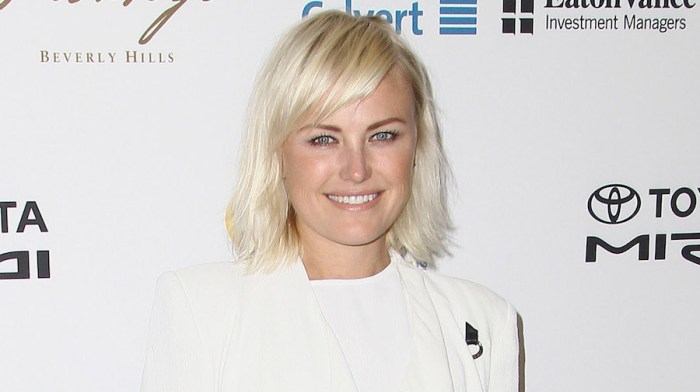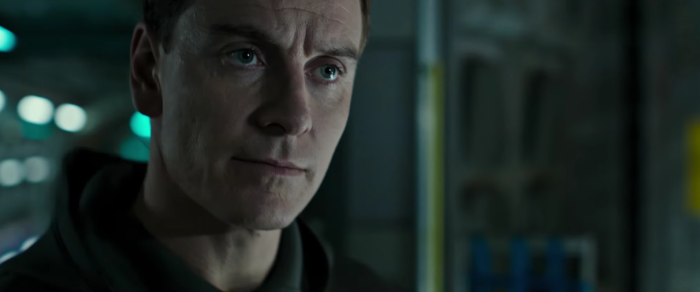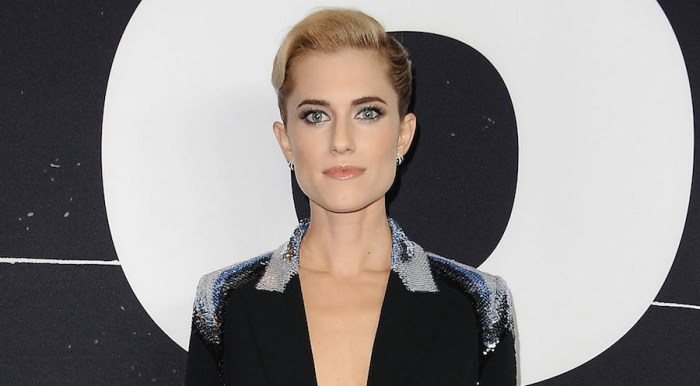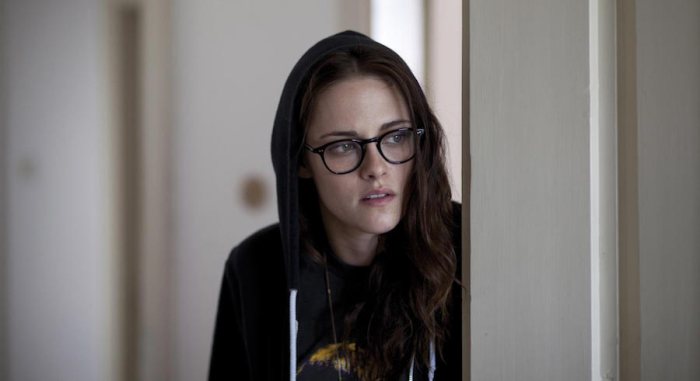Hollywood isn’t that progressive. Much as actors and filmmakers talk a big game about making the world a better place, the movies still haven’t gotten over “white-washing.” This week sees the release of “Ghost in the Shell.” It’s a huge movie — one of the year’s priciest, starring one of our splashiest names, Scarlett Johansson. And yet right there is the problem: The white, American actress is playing a cyborg hero who, in the beloved anime and manga upon which the film is based, was, of course, Japanese. “Ghost in the Shell” has been besieged by criticism since it was announced. These days we’re more aware to look for “white-washing” when it happens. After all, we’ve had practice. “White-washing” has existed since the birth of movies, but it’s really only been in the last few years that we’ve come to see it in a negative light. RELATED: 10 best movie space monsters, ranked There are too many cases of “white-washing” to supply a complete list; it truly is a century-plus old epidemic. Here are 10 cases of it, then and now:
Charlie Chan films
There was Sherlock Holmes, there was Hercule Poirot, there was Miss Marble. And then there was Charlie Chan, another first rate sleuth from the golden age of fictional crime-solvers. Created by American novelist Earl Derr Biggers, Chan was born out of great intentions: Biggers was disgusted by the “Yellow Peril” stereotypes of the time, and he wanted his Chinese detective to be seen as a hero. Of course, in doing so, Biggers traded in plenty of stereotypes of his own, playing to “Oriental” exoticism that continues to this day (see: “Doctor Strange,” below). Chan started as a literary character in 1919, and in the ’20s he became a staple of cinema. Over 60 Chan films were made, all the way up to the ’80s. Throughout, he was almost never played by a Chinese actor. Instead he was played by a Swedish-American (Warner Oland), two Americans (Roland Winters and Sidney Tolar), a Brit (Peter Ustinov). There were Chinese Chan films, too; as it turns out, Chinese audiences were happy to see themselves portrayed positively in American cinema for a change. That makes star Xu Xinyuan one of the only Asian actors to play the beloved Asian character. ‘Winchester ’73’ (1950)
By and large, Native Americans don’t come off well in old Westerns. After all, they were often the villains. To add insult to injury, they were also rarely played by Native Americans. Instead they were played by people like Burt Lancaster (1954’s “Apache”), Audrey Hepburn (1960’s “The Unforgiven”) and, perhaps most weirdly, Rock Hudson in Anthony Mann’s “Winchester ’73” — an otherwise great Jimmy Stewart film briefly undermined by the image of the future star of “Pillow Talk” with face-paint and feather pigtails. ‘The Conqueror’ (1956)
There’s “white-washing,” and then there’s John Wayne playing Genghis Khan. He looks and sounds ridiculous, delivering his lines with the same booming, 100 percent American drawl he’d have done had he been portraying some rugged cowboy. A perennial favorite of “Worst Movies Ever” lists, it’s actually not terrible. Providing you can ignore all the American actors pretending to be founders of the Mongol Empire — a big ask, admittedly — it’s actually a pretty solid Western, only with everyone wearing the wrong clothes. And on top of that, the film was shot in Utah, near a nuclear weapons testing site, and it’s believed everyone involved was contaminated. Many of them died of various forms of cancer. ‘Breakfast at Tiffany’s’ (1961)
Any casual viewing of the Audrey Hepburn classic is periodically made uncomfortable whenever Mickey Rooney shows up. He’s Mr. Yunioshi, Holly Gollightly’s easily annoyed neighbor. Never one to do anything by half measures, the legend goes all-in with the broad Asian stereotypes, complete with giant teeth and overly squinted eyes. He’s so offensive he might even distract you from asking other questions: What exactly is Holly’s profession, which the movie can’t reveal because it was made in 1961? And in the Truman Capote book, wasn’t her love interest, played in the film by George Peppard, gay? ‘Othello’ (1965)
Over the centuries, Shakespeare’s “Moor of Venice” has been played by countless white actors, including Anthony Hopkins in a 1981 BBC production. But few went all-in on the blackface the way Laurence Olivier did in this 1965 film. It wasn’t enough for him to bathe his face in burnt cork. The acting god also adopted a “black” voice, reciting the Bard’s words in a manner that can make you cringe in iambic pentameter. ‘Short Circuit’ (1986)
Fisher Stevens has done a lot of good; last year he directed “Before the Flood,” a climate change doc starring Leonardo DiCaprio. When he was younger, though, he applied brownface and an OTT accent to play Ben Jabituya, the lovable Indian scientist who, along with Steve Guttenberg, helps create wisecracking sentient robot Johnny 5. How bad were the ’80s? So bad that Stevens reprised the role, this time as the lead, in “Short Circuit 2.” ‘Exodus: Gods and Kings’ (2014)
“White-washing” died down a bit after the Reagan era, though it never entirely went away. When it did happen, few said anything. There wasn’t much outcry when “Batman Begins” cast Liam Neeson as Arabian villain Ra’s al Ghul. Only a few places noted that in “The Social Network,” Max Minghella was playing Divya Narendva, the son of two Indian doctors. “Argo” conquered the Oscars without much furor over Ben Affleck casting himself as a man named Antonio Mendez. But in 2014, the tables suddenly turned. The makers of “Exodus” thought they were doing what had been done since cinema’s birth: stocking a Biblical epic not with Middle Eastern characters but with the whitest Caucasians imaginable. But all of a sudden people weren’t having Christian Bale as Moses, or Joel Edgerton as Ramses. Director Ridley Scott tried to argue that he couldn’t get the film financed at the scale he wanted with non-famous (and non-white) actors. Buts uddenly the doors were wide open to call “white-washing” out until it stopped. ‘Pan’ (2015)
But it didn’t stop. Less than a year later Rooney Mara was playing Tiger Lily, “Peter Pan”’s beloved Native American Neverland bud. The pushback was fierce, but to her credit Mara admitted that taking the role didn’t make her “feel great,” even if she did ultimately decide the skeeziness was outweighed by her desire to be in a highly unusual twist on a classic. But it wasn’t worth it: “Pan” was hated by critics and ignored by audiences, and it went down as one of the priciest bombs in movie history. So at least there was some comeuppance. ‘Gods of Egypt’ (2016)
Where to start? How about Gerard Butler’s Scottish accent in Ancient Egypt? How about Nikolaj Coster-Waldau as Horus, the 10-foot-tall god of air? How about a blindingly white cast that only made room for one man of color, Chadwick Boseman? “Gods of Egypt” is already plenty insane — a phantasmagoric whatzit that recalls the days when most Hollywood decisions were made in front of a quarry of cocaine. (Of course, that assumes that era went away.) That it’s also #problematic only adds another car to the trainwreck. ‘Doctor Strange’ (2016)
By this point you could see Hollywood really, truly attempting to change their ways. But the transition has so far been awkward. Take this Marvel entry. Tackling a dodgy source birthed in 1963 — with a white character traveling to Asia and literally stealing another culture’s magic — it did what it could. It even turned the training grounds of Kamar-Taj into an international club. You could even argue that it’s not even a bad thing that the Ancient One — a straight-up “Oriental” stereotype — is now a Celtic mystic played by a hairless Tilda Swinton. But it still, as Buzzfeed’s Alison Willmore argued, trades in a “mishmash of Asiana,” smudging together bits from various Asian countries without care for boundaries or specifics. We still have a long way to go, as you can tell by “Ghost in the Shell.” BONUS: A mistaken case of alleged “white-washing”
Sorry, everyone, but this winter’s “The Great Wall” is not a case of Hollywood making the world white again, as we previously argued. It was a Chinese-American co-production, a fusion between two blockbuster super-powers to bridge the gap between two very different types of moviegoers. Headliner Matt Damon did not replace a character who was supposed to be Chinese. In fact, the entire film is about different ethnicities coming together to battle a real menace — which the advertisements failed to stress was actually space monsters. Damon isn’t even the most badass person in the movie. That would be Tian Jing, who played the fearless female commander. Her fine work here was rewarded with a role in “Kong: Skull Island,” where all she did was stand around holding paperwork and look underused. At least let her kick some giant reptile butt. Follow Matt Prigge on Twitter @mattprigge
‘Ghost in the Shell’ and 10 other cases of Hollywood white-washing
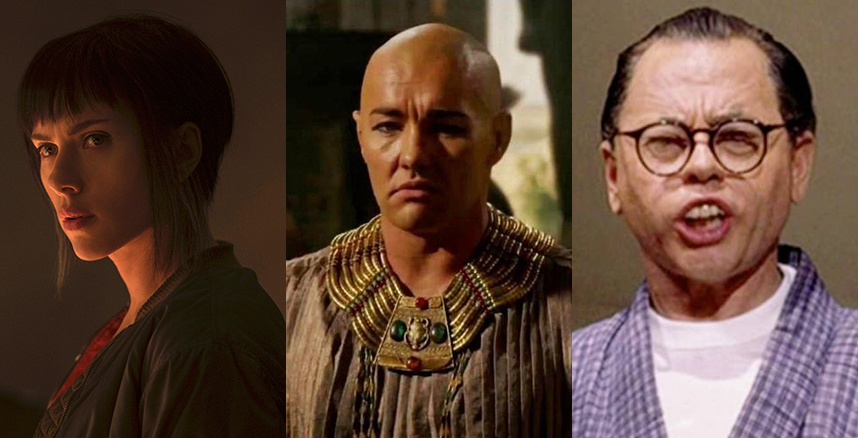
Paramount Pictures, Twentieth Century Fox, Paramount Pictures

